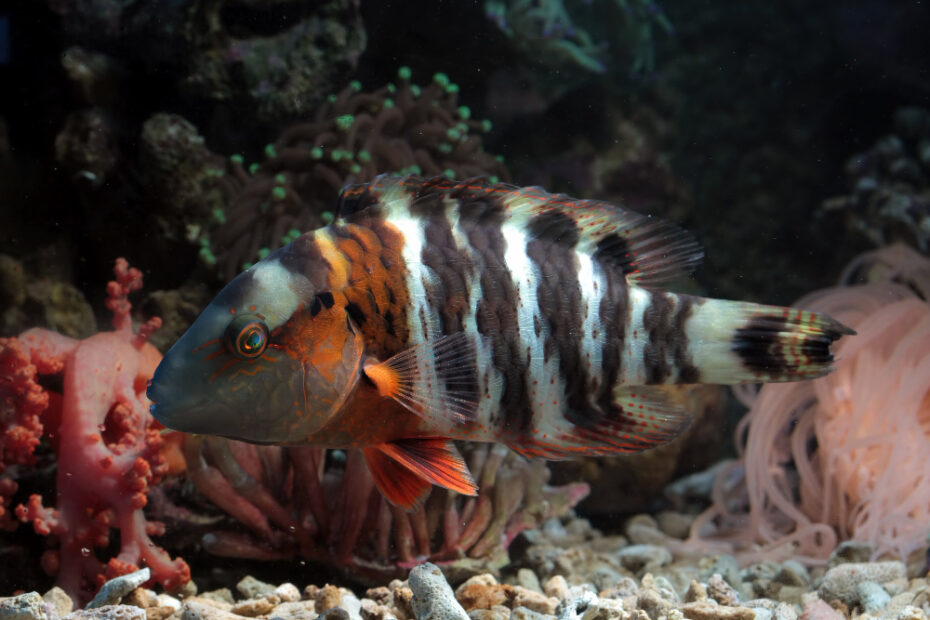The Red-breasted Wrasse, also known as the Lunare Wrasse or Moon Wrasse, is scientifically termed as Thalassoma lunare. This vibrant and active fish is often sought after for its striking coloration and intriguing behavior.
Appearance: Juveniles and females are greenish to blue-green with a dark spot on the scales, which gives a checked appearance. As they mature into males, the color becomes increasingly vibrant. Adult males have a bright green back, a red belly, and a thick black streak running from the eye to the tail, which is bordered in neon blue. They also develop a bright yellow patch behind the pectoral fin.
Habitat: The Red-breasted Wrasse is found in the Indo-Pacific region, ranging from the Red Sea down to South Africa and eastward to Samoa. They are typically seen in lagoon and seaward reefs, often in turbid habitats.
Aquarium Care:
- Tank Size: These wrasses can grow up to about 10 inches (25 cm) in length, so a tank of at least 125 gallons (473 liters) is recommended to provide ample swimming space.
- Diet: They are carnivorous and have a varied diet in the wild, which includes small crustaceans and mollusks. In captivity, they should be offered a mix of meaty foods such as mysis shrimp, brine shrimp, chopped seafood, and high-quality commercial foods.
- Tank Mates: Generally, they are peaceful with non-similar species but can be aggressive toward other wrasses, especially of the same kind. It’s advisable to avoid keeping them with very docile species or small ornamental shrimp, which they might see as food.
- Environment: These wrasses are known for their jumping ability, so a tight-fitting lid or mesh top is essential to prevent escapes. They also appreciate a sandy substrate, as they may burrow into the sand when they feel threatened or during nighttime.
- Water Parameters: As with most marine species, the Red-breasted Wrasse thrives in water conditions mimicking natural seawater – salinity of 1.023-1.025 specific gravity, temperatures of 72-78°F (22-25.5°C), and pH levels between 8.1-8.4.
- Health: They are relatively hardy, but like all marine fish, they can be susceptible to common ailments like ich or marine velvet. Proper acclimation, quarantine procedures, and maintaining optimal water conditions can help keep them healthy.
Conclusion: The Red-breasted Wrasse is a beautiful and active fish that can be a stunning addition to a suitable marine aquarium. Potential keepers should be prepared to meet their space, dietary, and environmental needs. Proper care and attention to tank compatibility can ensure that this wrasse remains a vibrant and interactive member of the marine aquarium community.

